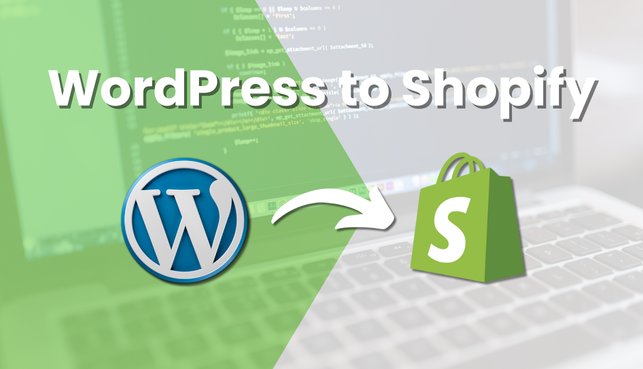
- April 9, 2025
- ondigit3
- 0 Comments
- Social Media
WordPress to Shopify: Why Migrate and Which Is Better for Scaling Your Store?
Thinking of Growing Your Store? Here’s Why Shopify Might Be Your Next Smart Move
As your eCommerce business scales, your platform must keep up. If you’re currently using WordPress with WooCommerce, it’s natural to ask: Is it time to switch to Shopify? In this post, we’ll explore why businesses are moving from WordPress to Shopify, how the platforms compare, and what to expect during migration.
And most importantly, we’ll help you decide if Shopify is the right platform to scale your business.
Why Migrate from WordPress to Shopify?
Migrating from WordPress to Shopify is a smart move for businesses looking to simplify operations and grow. Here’s why so many brands are making the leap:
1. All-in-One Simplicity
Shopify removes the complexity of plugins, manual updates, and maintenance. Everything from hosting to checkout is included-making it ideal for entrepreneurs and scaling teams.
2. Performance & Speed
Shopify stores are fast out of the box. No need to worry about bloated plugins slowing you down like on WordPress. Faster load times mean better conversions and SEO.
3. Scalability
WordPress works well for smaller stores, but Shopify is purpose-built for growth. You can handle more traffic, more products, and complex integrations without performance dips.
4. Security & Support
Shopify takes care of PCI compliance, SSL certificates, and updates. You also get 24/7 customer support, something not typically available with self-hosted WordPress sites.
WooCommerce vs Shopify: A Quick Look
Feature | WordPress + WooCommerce | Shopify |
Setup | Manual & Plugin-Based | Plug & Play |
Hosting | Self-managed | Included |
Maintenance | Regular updates required | Automatic |
Built-in Features | Requires multiple plugins | All-in-one |
Support | Community-based | 24/7 Live Support |
If your store is growing, Shopify removes the technical clutter and lets you focus on sales and strategy.
What Happens When You Migrate?
Migrating from WordPress to Shopify can sound daunting, but with the right team, it’s a smooth transition. Here’s what the process looks like:
- Back up your WordPress site
- Export product data, images, and customer info
- Rebuild key pages in Shopify (home, product, collections, etc.)
- Import blog content and SEO metadata
- Set up redirects to preserve rankings
- QA and launch
👉 Let our Shopify development team handle the migration for you. We make it stress-free, fast, and SEO-friendly.
Is Shopify Better for Scaling Your Store?
Absolutely. Shopify is designed for brands that are ready to grow. Here’s how it helps:
- Supports large inventories & high traffic
- Built-in analytics to monitor performance
- Seamless integrations with marketing tools, CRMs, and ERPs
- Easy multi-channel selling (Instagram, Amazon, TikTok, etc.)
If your WordPress store is starting to feel like a patchwork of plugins and duct tape fixes, it’s time to scale up with Shopify.
Final Thoughts: Make the Move When You’re Ready to Grow
Whether you’re just hitting your stride or preparing for serious growth, moving from WordPress to Shopify is a strategic upgrade. You’ll spend less time managing tech and more time building your brand.
Want to Migrate from WordPress to Shopify? Get a Free Consultation Today
Scaling your eCommerce business shouldn’t come with tech headaches. Let our Shopify experts at OnDigit handle your migration with precision, performance, and care.
Frequently Asked Questions
Not if it's done right. With 301 redirects, proper metadata transfer, and sitemap updates, you can retain or even boost your SEO post-migration.
Shopify has a monthly fee, but it includes hosting, security, and built-in features. WordPress might appear cheaper upfront but often incurs higher costs over time (plugins, hosting, dev support).
Yes. We can migrate your WordPress blog to Shopify, preserving posts, formatting, and SEO structure.
Depending on the store’s complexity, most migrations take between 1 to 3 weeks. Our team provides a timeline during the planning phase.
